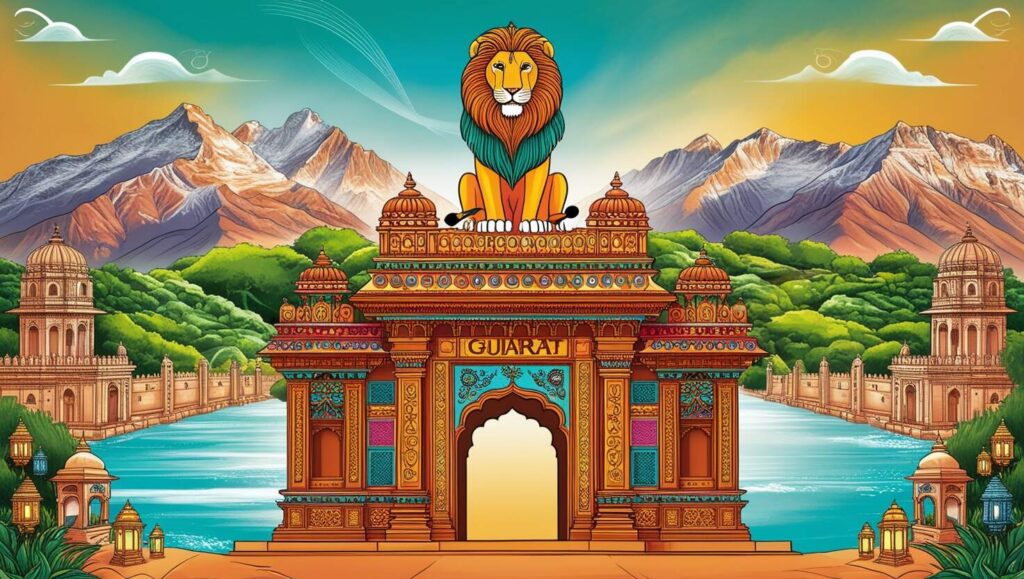Gujarat, located on the western coast of India, is known for its vibrant culture, rich history, and economic prowess. Gujarat holds a significant place in India’s heritage.

Here’s a list of 70 fascinating facts about Gujarat
Gujarat is the birthplace of Mahatma Gandhi.
The state is home to the famous Gir National Park, the last refuge of Asiatic lions.
Gujarat hosts the world’s tallest statue, the Statue of Unity.
The Rann of Kutch is the world’s largest salt desert.
Gujarat is one of India’s most industrialized states.
Ahmedabad, the largest city, is India’s first UNESCO World Heritage City.
Gujarat has a coastline stretching over 1,600 kilometers.
The state celebrates Navratri with the longest dance festival in the world.
Somnath Temple, one of the 12 Jyotirlingas, is located here.
Gujarat is a dry state that prohibits the sale of alcohol.
The city of Surat is famous for its diamond cutting and polishing.
Lothal is one of the world’s oldest known ports from the Indus Valley Civilization.
Gujarat ranks among the top states in India for solar energy production.
The Patola sarees of Gujarat are world-famous for their intricate designs.
The Kite Festival during Makar Sankranti attracts visitors from all over the world.
Also Read – You Should Know 20 Fascinating Facts of India Cricket Team
The Rann Utsav is a cultural festival showcasing the best of Gujarat.
Dwarka, one of the four sacred Hindu pilgrimage sites, is located here.
Gujarat has one of the lowest crime rates in India.
Porbandar is the birthplace of Mahatma Gandhi.
Bhavnagar houses Asia’s largest ship-breaking yard.
Gujarat produces over 70% of India’s salt.
The Dandi March started in Gujarat.
Gujarat’s Zari embroidery is world-renowned.
The Parsi community plays a significant role in Gujarat’s culture.
Modhera Sun Temple is an architectural marvel of the state.
Gujarat has the highest vegetarian population in India.
Vadodara is known for its royal palaces and cultural heritage.
Gujarat produces a large percentage of India’s cotton.
Palitana Temples in Gujarat are an important Jain pilgrimage site.
Gujarat has been ruled by several dynasties, including the Mughals and Marathas.
Dhokla and Thepla are popular Gujarati snacks that are enjoyed globally.
Gujarat’s coastline is rich in marine biodiversity.
Amul, India’s largest dairy brand, started in Gujarat.
Gujarat has a rich history in the freedom struggle.
Sardar Vallabhbhai Patel was born in Gujarat.
The Blackbuck National Park is home to the endangered blackbuck antelope.
Gujarat’s Bandhani (tie-dye) textiles are famous worldwide.
Narmada Dam is one of the largest dam projects in India.
Gujarat was a major trade hub during ancient times.
Junagadh is known for its historical forts and monuments.
Gujarat has a flourishing handicraft industry.
Kutch is famous for its vibrant embroidery work.
The Sabarmati Ashram in Ahmedabad was Mahatma Gandhi’s residence.
Gujarat International Finance Tec-City (GIFT) is India’s first smart city.
Gujarat’s Kadi industries are a hub for cotton spinning.
The Dwarka submerged city is believed to be Krishna’s kingdom.
Ambaji Temple is one of the most important Shakti Peethas.
Gujarat’s Kala Raksha promotes traditional craft skills.
Marine National Park in Gujarat is the first of its kind in India.
Saputara Hill Station is a popular tourist spot.
Gujarat’s Bhavai folk dance is a vital cultural expression.
Porbandar is a key center for fish production.
Gujarat is a leader in India’s industrial development.
The state’s economy thrives on agriculture, particularly cotton and tobacco.
Chorwad Beach is known for its serene beauty.
Gujarat boasts several wildlife sanctuaries.
Gujarat Science City promotes scientific knowledge among students.
Nal Sarovar Bird Sanctuary is a haven for migratory birds.
Gujarat’s Garba dance is famous worldwide.
Rajkot is a major hub for small-scale industries.
Gujarat’s cuisine is a balance of sweet, salty, and spicy flavors.
The Khambhat Gulf is known for its pearl fisheries.
Gujarat’s Anjar is one of the oldest towns in India.
Bhuj is famous for its handicrafts and historic architecture.
Gujarat has excellent road and railway connectivity.
Sasan Gir is the only place to see Asiatic lions in the wild.
Gujarat has a rich legacy in literature, including Gujarati poetry.
Vadnagar, Narendra Modi’s birthplace, is an ancient city with a rich history.
Gujarat’s industrial sector includes chemicals, textiles, and ceramics.
The Dwarkadhish Temple is a major pilgrimage destination.
These facts offer just a glimpse into the cultural richness, historical significance, and economic strength that make Gujarat a fascinating state in India.
